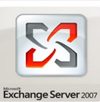
The audience for this course includes people who have experience with Exchange Server 2007 or previous Exchange Server versions. These people will have experience installing and configuring Exchange Server, configuring recipients and mailboxes, and supporting Exchange Server clients. People beginning this course are expected to have at least three years experience working in the Information Technology field—typically in the areas of network administration or Windows Server administration—and one year of Exchange Server administration experience.
| Exam # | Duration | Language | Level | Type | Classroom | Code | Fees |
| -- | 9 | English | Professional | Course | Classroom | Cs368 | 0 LE |
This course teaches messaging specialists to recover Exchange mailboxes and servers in a variety of disaster scenarios. Students will learn how to perform full and dial-tone recoveries of a mailbox server, as well as repair a mailbox database. They will also learn how to perform a full recovery of Client Access servers, Hub Transport servers, Unified Messaging servers, and Edge Transport servers.
Recovering Messaging Databases
Preparing for and Recovering from Mailbox Server Failures
Preparing for and Recovering from Non-Mailbox Server Failures
This course requires that students meet the following prerequisites: Working knowledge of malware. Examples include approaches to scanning for viruses (client-based, SMTP-based, Exchange-based); methods that worms use to propagate; and basic concepts of spam, phishing schemes, and unwelcome message content; Working knowledge of how PKI is managed in the directory; Working knowledge of Windows Server 2003 operating system. For example, how storage is configured, basic backup and restore techniques, and what a client/server application interaction means; Working knowledge of network technologies. For example, what TCP/IP and DNS do and how to use them, basic routing concepts (WAN vs. LAN, router vs. switch vs. hub); Working knowledge of Active Directory directory service. Examples include how user objects are managed, what is stored in Active Directory partitions, basic architectures (domain, forest, sites, etc.), and how domain controllers are managed. Additionally, site and site connector configuration, schema and configuration partitions, and Global Catalogs; Working knowledge of Exchange Server 2007. For example, what the different server roles are, how the different server roles interact, what protocols the server roles use to communicate, what roles the clients connect to, and how to configure messaging recipients and Exchange Server 2007 computers; Conceptual understanding of firewalls. For example, how SMTP messages are allowed through a firewall; Conceptual understanding of e-mail technologies. For example, that SMTP is a protocol used for e-mail, and the differences between transport protocols and client access protocols (POP, IMAP, SMTP). Experience using these tools and applications: NT Backup; NSLookup; Microsoft Windows Explorer; Microsoft Management Console (MMC); Active Directory Users and Computers; Active Directory Sites and Services; Internet Information Services (IIS) Admin; Microsoft Office Outlook; Completion of the following equivalent knowledge of Introduction to Installing and Managing Microsoft Exchange Server 2007.
Introduction to Installing and Managing Microsoft Exchange Server 2007 SP1
Microsoft Official Courseware (MOC)
This course includes several labs to ensure you will gain the targeted skills and experience.
This course is a credit towards prepare Exam 70-236: TS: Exchange Server 2007, Configuring